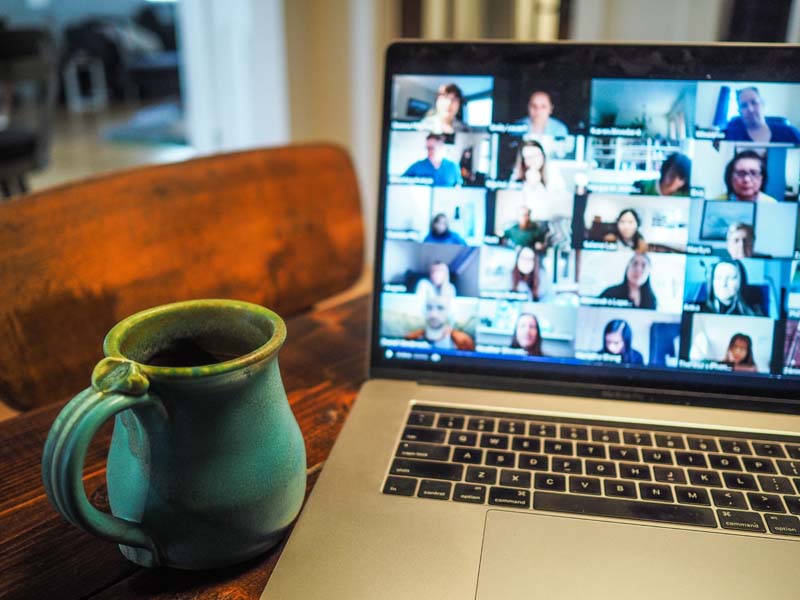
There’s no doubt that the working landscape has changed dramatically in 2020. With offices around the country standing empty and millions of employees working from home, working practices have had to adapt quickly. Have tools like Zoom (or Microsoft Teams) helped or hindered productivity?
One of the first challenges companies had to address when the reality of the coronavirus pandemic hit, was how to keep colleagues connected with one another while working from home. The answer for most was the video conferencing platform Zoom.
For many businesses across the country Zoom has been a lifesaver, allowing meetings, briefings, training, seminars, and day-to-day catch ups to continue.
Zoom has made it possible for colleagues to continue collaborating, even when they cannot be face-to-face. And when the country was in a full lockdown, it provided much-needed human connection, with a window into the lives (and spare rooms) of colleagues and friends.
But now, after several months of working from home, are companies relying on Zoom too much? Is Zoom hindering productivity rather than supporting it? And with online meetings scheduled throughout the day, are your staff suffering from Zoom fatigue?
The problem with ‘Zoom fatigue’
While Zoom has many advantages, we may now be seeing a Zoom backlash, as people tire of back-to-back virtual meetings.
Zoom fatigue is the weariness many people experience after spending time on video calls, where productivity falls. The fatigue can be caused by the physical strain on the body – sitting in one position for hours and staring at a bright screen will naturally take its toll. But there is also a mental and emotional strain when sitting in video calls.
While in a real-life meeting, it’s easy to read body language and make eye contact with colleagues, this is much more difficult on a video call. As a result, it’s hard to experience the fulfilling human connection that comes naturally when colleagues are face to face. As a result, people can feel anxious or disconnected when on a Zoom call.
Another common problem encountered when staff spend hours on video calls is that there is little time left to actually get the work done. It’s all too convenient to suggest people ‘hop on a Zoom’ and it’s easy to fall into the trap of inviting everyone ‘just in case’, meaning that entire teams become tied up for hours on end.
We’ve heard reports of people spending entire days in back-to-back Zoom meetings and then having to work into the evenings to complete the actions from the many meetings.
The combination of increased stress caused by the pressures of Zoom video conferencing alongside the fact that there isn’t time to complete the work can mean you see productivity fall dramatically.
The solution to Zoom overload
If you’re worried about how many hours are being wasted on video calls in your organisation, the answer is not to discard Zoom but to instead look at how you’re using the platform.
A good strategy is to see Zoom not as a stand-alone tool but to instead combine it with a work management platform. This way you can create an enjoyable culture where people still feel connected but also have the time and resources to get work done.
Here are our tips to help avoid Zoom fatigue
- Combine Zoom with other platforms
By using a work management platform, such as Smartsheet, you can give staff easy access to the real-time information they need for any project. This means video calls no longer need to be used to update people, or run through deadlines, updates and timescales. Instead, Zoom meetings can be used as an energetic space to discuss ideas and make decisions.
- Limit the number of Zoom meetings you have during the week
Think carefully before arranging a Zoom meeting. Is there a better way to collaborate or gain information that doesn’t require a meeting? A work management platform will be able to provide the information you need without spending hours going through updates in a meeting.
- Limit the length of Zoom meetings
The danger of hosting one-hour Zoom meetings is that everyone will talk for an hour whether it’s necessary or not. This is draining and can mean that subsequent meetings start late. We recommend sticking to 45-minute meetings as a maximum to keep everyone focused and allow time for staff to take a walk or grab a coffee in between meetings. A good way to keep meetings shorter is to remind everyone to check the status of projects in the work management platform before they join the call.
- Be mindful of different personalities
Just as in a real-life meeting, on Zoom you can find that the big personalities dominate the conversation. In a virtual meeting, it can be even more difficult for quieter participants to make themselves heard. Without the cues of body language and eye contact, they might not feel confident enough to speak up so it’s important for the meeting host to ensure everyone gets chance to provide input.
If you’d like to find out how you can use a work management platform to improve productivity in your organisation, working alongside tools such as Zoom, get in touch to book your free discovery call.




